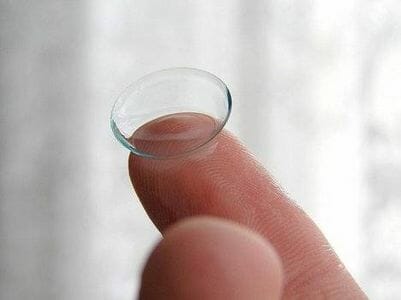How Contact Lenses Came About

From Theory to Reality
Contact lenses as a concept are generally credited to Renaissance polymath Leonardo di Vinci in 1508. He described altering the power of the cornea by submerging the eyes in a bowl of water in his Codex of the Eye, Manuel D. Nearly 350 years later, Sir John Hershel theorized that people might use “a mold of the cornea” on “some sort of transparent medium” or a “spherical capsule of glass filled with animal jelly” to correct vision.
While these concepts laid the foundation for the contact lens, it wasn’t until 1887 that contact lenses became a reality. That year, a German glassblower made the first successful eye covering that was transparent and tolerable. Also in 1887, fellow German ophthalmologist Adolf Fick successfully constructed and fitted the first contact lenses. Working in Zurich, Fick experimented first on rabbits, then on himself, and finally on a small group of volunteers. His contact lenses were made of hand-blown glass and rested on the tissue surrounding the cornea. They were 18-21mm in diameter, and could only be worn a few hours at a time.
Modern Contact Lenses
While contact lenses continued to improve, becoming slimmer, more comfortable, and more effective, they continued to be made of glass until the 1930s, when polymethyl methacrylate (AKA plexiglass) was invented and became a safer, more shatter-resistant alternative to glass contact lenses. Then, in 1949, contact lenses that sat only on the cornea were invented.
These contact lenses could be worn sixteen hours a day, and were the first lenses that drew any degree of popularity. They were expensive and fragile, causing a market to develop of contact lens insurance that lasted into the mid-1990s, as contact lenses became more affordable and durable.
Contact lenses were light, fairly durable, and were effectively corrective by the 1970s, but were not oxygen permeable, which could potentially cause a variety of ocular problems for the wearer. Experimenting with a variety of polymers, chemist Norman Gaylord played a pivotal role in developing gas-permeable but ridged lenses (RGPs).
Around the same time, Otto Wichterle and Drahoslav Lim were working to develop soft hydrogel contact lenses, which were approved by the FDA in 1971. These “soft” lenses soon gained popularity, and set the standard for contact lens wear.
In 1998, Mexican optometry company Ciba Vision improved on the hydrogel contact lenses by using silicone for its high oxygen-permeability, ushering in the contact lenses we know today. New contact lenses continue to undergo refining, with companies developing new polymers and polymer blends to improve function and comfort while sacrificing none of the performance we’ve come to expect from our contact lenses.
[Photo Via: Ehow]

